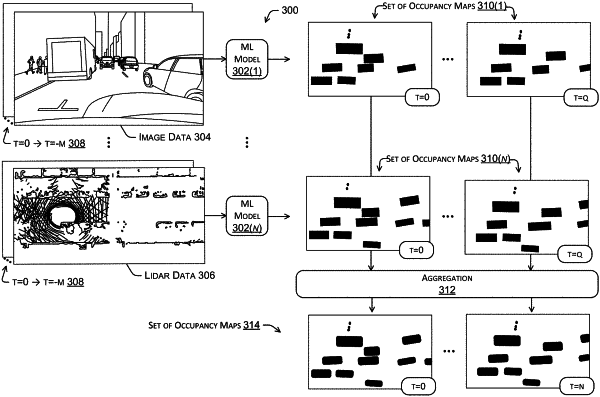| CPC G05D 1/0274 (2013.01) [B60W 30/0956 (2013.01); B60W 60/0016 (2020.02); B60W 60/00272 (2020.02); B60W 60/00276 (2020.02); G06V 10/764 (2022.01); G06V 10/803 (2022.01); G06V 10/82 (2022.01); G06V 20/58 (2022.01)] | 20 Claims |

|
1. A system comprising:
one or more processors; and
a memory storing processor-executable instructions that, when executed by the one or more processors, cause the system to perform operations comprising:
receiving spatial data associated with a first sensor type;
receiving image data associated with an image sensor;
determining, based at least in part on the spatial data and using a first machine-learned model trained to determine occupancy maps from only spatial data, a first current occupancy map and a first predicted occupancy map;
determining, based at least in part on the image data and using a second machine-learned model trained to determine occupancy maps from only image data, a second current occupancy map and a second predicted occupancy map;
combining the first current occupancy map and the second current occupancy map into a data structure indicating whether a portion of an environment is occupied or unoccupied at a current time;
combining the first predicted occupancy map and the second predicted occupancy map into the data structure indicating whether the portion of the environment is occupied or unoccupied at a future time; and
controlling an autonomous vehicle based at least in part on the data structure.
|